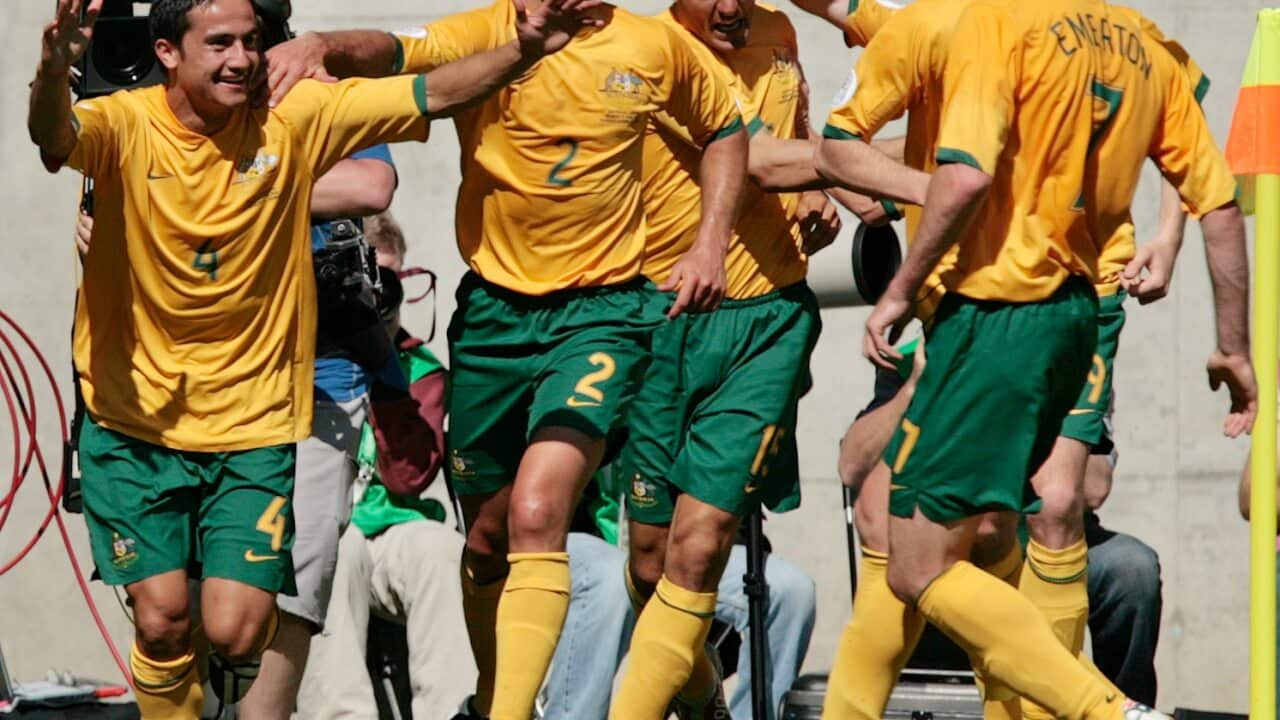It’s hard to believe that 10 years have passed since the Socceroos returned to international football’s biggest stage.
The 2006 World Cup campaign ignited an unprecedented level of fervour as the Australian public and media threw themselves whole-heartedly behind the Socceroos.
Several memorable moments came out of the team’s four matches during those Two Weeks in June – hours of sleep lost, vocal chords strained, hairs sprouted grey and of course, many tears shed.
How could one forget Harry Kewell’s pulsating equaliser against Croatia that cemented second spot in Group F, securing the team’s passage to the knockout phase.
Or the moment (opportunistic) Italy defender Fabio Grosso tumbled over in the penalty box after minimal contact with Lucas Neill – which ultimately led to Francesco Totti’s successful penalty and Australia’s elimination.
And, we all remember the Socceroos' opening match victory over old foe Japan at the Fritz-Walter Stadion.
On that day the Socceroos clinched their first ever Cup victory and Tim Cahill netted the country’s first-ever goal - and the second - on the biggest stage in football.
Not only did the 3-1 result secure three valuable points for Australia in the pool coined the “group of death”, it also reminded the world that the Aussie battling spirit could be extended to the football pitch.
Reflecting upon this match 10 years on, it’s clear that same battling spirit is present in every match that 11 players don the green and gold.
Kaiserslautern: 12 June 2006
On that sunny day in south-west Germany, striker Mark Viduka led Australia onto the pitch in front of a capacity crowd of 46,000.
It had been 32 years since the nation was last represented at football’s showpiece event and it came seven months after John Aloisi secured the team’s qualification by slotting the historic penalty to defeat South American powerhouse Uruguay in Sydney.
Fans watching at home in the early hours of the morning, me among them, felt a tingling sensation as the match kicked off – we were finally at the World Cup – everything led to this match.
It didn’t take long for the action to begin, and it was Japan that grabbed the lead in the 23rd minute after a moment Aussie goalkeeper Mark Schwarzer would rather forget.
Stunned by this strike, the Socceroos spent the next 60 minutes chasing an equalising goal.
In the 53rd minute, Australia's Dutch coach Gus Hiddink decided to bolster the attack by introducing Tim Cahill for midfielder Mark Bresciano.
Cahill’s fresh legs and bulldog-like style seemed to trouble the Japanese defence, who at this stage were barely holding on to their one-goal lead.
With six minutes remaining and each attack becoming more frantic, Lucas Neill launched a throw-in into the Japanese penalty area. The ball boggled around like a pinball before Cahill snapped a quick shot toward goal.
Right before our eyes, in a second that seemed like five, the ball rolled through a sea of legs, and into the net – the equaliser had arrived.
The tussle resumed and before supporters could retake their seats, the ball found itself at Cahill’s feet again at the edge of the penalty box – a touch to tee himself up and a cracking strike in off the post - and Australia led 2-1.
John Aloisi would chime in with a third goal to seal the result with almost the last kick of the match, to send Socceroos supporters into delirium.
An eight-minute flurry that resulted in Australia’s finest football moment.
At home, news bulletins nationwide led with the result throughout the day, something that had been incomprehensible during the dark years of Australian football.
The following decade
Looking back over the past 10 years of the Socceroos, it’s hard not to be impressed by the side’s successes on the pitch.
The team comfortably qualified for two consecutive World Cups in 2010 and 2014, and also reached No.14 in FIFA's world rankings in 2009.
The country solidified their position among Asia’s best sides by winning the 2015 AFC Asian Cup on home soil.
This success came on the back of the 2006 World Cup campaign, and that opening match win over Japan signalled Australia’s coming of age as a football nation.
It opened up a realm of possibility for the next generation of football talent, and will be remembered for decades to come.
:: Peter Theodosiou is a Digital Journalist for SBS News and an avid football fan










